Contingency and Emergency planning is not a new concept. What feels new is the number of major crisis we have witnessed in North America, from the World Trade Center attacks in 2001 to the devastation from Hurricane Katrina in the southern U.S. in 2005 and most recently, Hurricane Sandy along the East Coast.
Every business needs an emergency and contingency plan to reduce the risk and lessen the potential impact on your employees, customers, and the financial health of your business in the case of an emergency.
The purpose of your Contingency & Emergency Plan is to think ahead about the potential risks and plan how you will respond, manage, and act when specific events occur. An emergency plan is a specific response to a natural or man-made disaster. It defines what you will do when it (the event) happens. It details a specific tactical and practical response to deal with the problems, issues, and confusion after a major emergency. Your emergency plan can focus on just the business or it can also include employees, customers, and suppliers. It involves the creation of specific strategies, organizational issues, and a structured response to provide an opportunity for members of your team to discuss the issues, train, and prepare.
A contingency plan is the portion of your business plan that examines the underlying assumptions in your business plan. Every business plan is based upon specific assumptions – such as certain facts, projections and market trends – that you believe are true. The process of writing your contingency plan will help you examine the viability of the business when assumptions change.
Among other items, your plan should answer the following example questions:
– Drop in revenue: What would you do if you do not reach your sales and revenue targets? How much of a difference would need to occur before you reexamine your marketing and strategies?
– Borrowing costs increase: If you are borrowing heavily and interest rates suddenly increase, what would you do to compensate for the increased costs? How much of an increase in interest rates would the business be able to absorb before it starts to impact the viability of the business.
– Customer Bankruptcy: What is your contingency plan if your business suffers a sustained interruption to cash flow due to a major customer going out of business?
– Disaster: In case of a major accident, event or disaster what would happen you’re your business based on your current level of preparedness? How is your business at a lower/higher risk than others?
– Loss of a Key Staff member: What will you do if a key staff member suddenly becomes ill, quits or dies? How would that affect you? How easy would it be to replace the person? How much would it cost?
– Increase in costs: What is your plan if utility, fuel or raw materials suddenly increase in cost? Are any of your products dependent on energy? If so, how can you mitigate the impact of a steep increase in energy costs?
– Lose a major supplier: What is your plan if a supplier goes out of business? What would happen to your business if they lose the right to continue to sell or distribute it?
– Accident or Illness on Premises: How will you respond if a customer gets injured, ill or creates a disturbance? What would need to change to ensure an appropriate response from you, your staff, and the business?
– Robbery or Violent Act: How vulnerable is your business to theft from employees, customers, and third parties? What is your data backup routine? What would be the impact of an act of vandalism or theft on your computer systems? Would you be able to restore operations on another system? How long would it take? How much would it cost? Does insurance cover the costs?
– Regulatory Restrictions: What is your plan if the health board closes your business? Are there any real estate or development caveats that could negatively affect the business? Are you compliant with all health, safety, and employer laws?
Planning ahead about how you will respond to, manage and act when unanticipated events occur is vital to your continued success. Taking the time to conduct a risk assessment in advance allows you and your management teams to think through possible scenarios, define the implications, and plan a response. If you need assistance, reach out to us and we will be glad to help.



